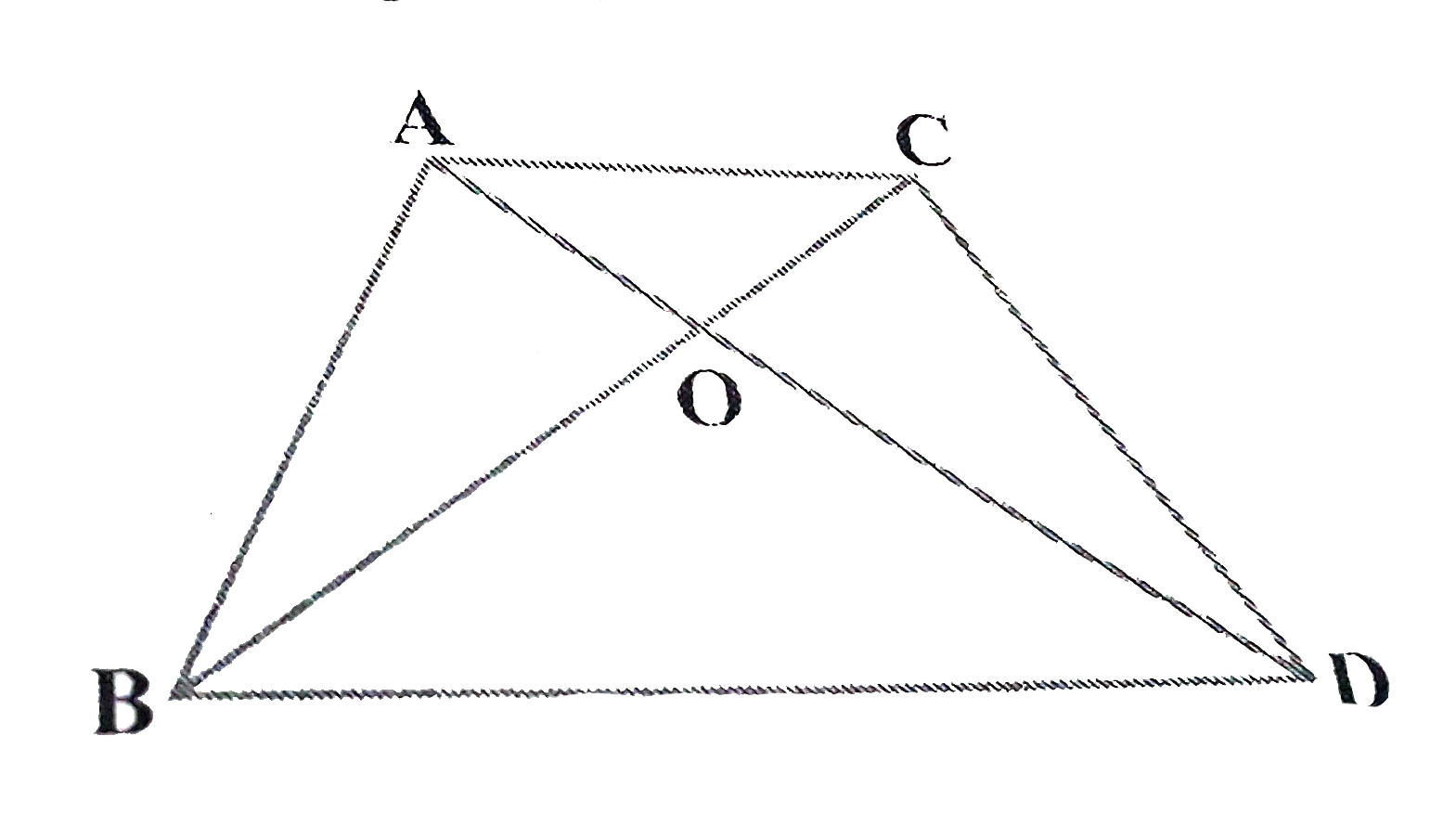Triangles ABC and DBC are on the same base BC with A, D on opposite side of line BC, such that ar(⊥ABC)=ar(DBC). Show that BC bisects AD.
To prove that line segment BC bisects line segment AD, we start with the given information about triangles ABC and DBC.
Step 1: Understand the given information
We have two triangles, ABC and DBC, that share the same base BC and are on opposite sides of the line BC. We are given that the area of triangle ABC is equal to the area of triangle DBC.
Step 2: Write the formula for the area of triangles
The area of a triangle can be calculated using the formula:
Area=12×base×height
For triangle ABC, the area can be expressed as:
AreaABC=12×BC×h1
where h1 is the height from point A to line BC.
For triangle DBC, the area can be expressed as:
AreaDBC=12×BC×h2
where h2 is the height from point D to line BC.
Step 3: Set the areas equal
Since we know that the areas of both triangles are equal:
12×BC×h1=12×BC×h2
We can cancel 12×BC from both sides (assuming BC ≠ 0):
h1=h2
This means the heights from points A and D to line BC are equal.
Step 4: Analyze triangles AEO and DFO
Now, consider triangles AEO and DFO, where E and F are the feet of the perpendiculars dropped from A and D to line BC, respectively. We have established that:
- AE=DF (heights from A and D to line BC are equal)
- ∠AEO=∠DFO=90∘ (both are right angles)
- ∠AOE=∠DOF (these are vertically opposite angles and are equal)
Step 5: Apply AAS (Angle-Angle-Side) criterion
Since we have:
1. AE=DF
2. ∠AEO=∠DFO
3. ∠AOE=∠DOF
By the AAS criterion, we can conclude that triangles AEO and DFO are congruent. Therefore, we have:
EO=OF
Step 6: Conclude that BC bisects AD
Since EO = OF, point O, which is the intersection of line segment AD with line BC, is the midpoint of AD. This means that line segment BC bisects line segment AD.
Final Conclusion
Thus, we have shown that BC bisects AD.
---
We have two triangles, ABC and DBC, that share the same base BC and are on opposite sides of the line BC. We are given that the area of triangle ABC is equal to the area of triangle DBC.
The area of a triangle can be calculated using the formula:
Area=12×base×height
For triangle ABC, the area can be expressed as:
AreaABC=12×BC×h1
where h1 is the height from point A to line BC.
AreaDBC=12×BC×h2
where h2 is the height from point D to line BC.
Since we know that the areas of both triangles are equal:
12×BC×h1=12×BC×h2
We can cancel 12×BC from both sides (assuming BC ≠ 0):
h1=h2
This means the heights from points A and D to line BC are equal.
Now, consider triangles AEO and DFO, where E and F are the feet of the perpendiculars dropped from A and D to line BC, respectively. We have established that:
- AE=DF (heights from A and D to line BC are equal)
- ∠AEO=∠DFO=90∘ (both are right angles)
- ∠AOE=∠DOF (these are vertically opposite angles and are equal)
Since we have:
1. AE=DF
2. ∠AEO=∠DFO
3. ∠AOE=∠DOF
EO=OF
Since EO = OF, point O, which is the intersection of line segment AD with line BC, is the midpoint of AD. This means that line segment BC bisects line segment AD.
Thus, we have shown that BC bisects AD.
Topper's Solved these Questions
Similar Questions
Triangles ABC and DBC are on the same base BC with A, D on opposite side of line BC, such that ar(△ABC)=ar(△DBC). Show that BC bisects AD.
View SolutionIn Figure, D,E are points on sides AB and AC respectively of ABC, such that ar(BCE)=ar(BCD). Show that DE ll BC .
View SolutionIn figure ABC and DBC are two triangles on the same base BC. If AD intersects BC at O, show that ar(ABC)ar(DBC)=AODO.

View SolutionA point D is taken on the side BC of a ABC such that BD=2dC. Prove that ar(ABD)=2ar(ADC).
View SolutionIn Figure, D,E are points on sides AB and AC respectively of △ABC, such that ar(BCE)=ar(BCD). Show that DE∣∣BC.
View SolutionD is a point on the side BC of a triangle ABC such that ∠ADC=∠BAC. Show that CA2=CB.CD.
View SolutionD and E are points on sides AB and AC respectively of ΔABC such that ar (DBC) = ar (EBC). Prove that DE∣∣BC.
View SolutionIn Figure, △ABC and △DBC are on the same base BC . If AD and BC intersect at O , prove that Area (ABC)Area (DBC)=AODO.
View SolutionIn a ABC, E is the mid-point of median AD. Show that ar (BED)=14ar (ABC)
View SolutionDiagonals AC and BD of a quadrilateral ABCD intersect at O in such a way that ar (AOD)=ar ( BOC). Prove that ABCD is a trapezium.
View Solution
